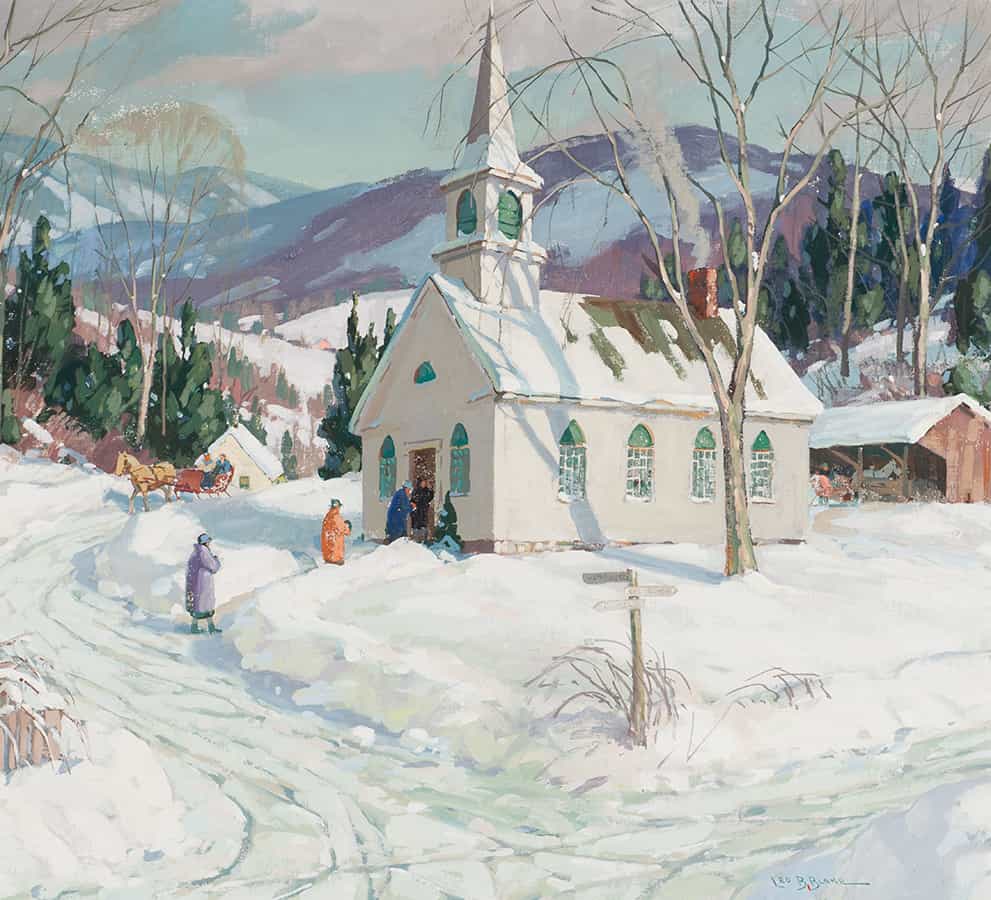The Collector by Mel Allen – Yankee Magazine, July/August 2023
For nearly half a century I have written about people and places I have known in New England, and I’ve never met anyone whose life has been defined by a place—and who has defined a place—as much as Lyman Orton. That place is Vermont. Or rather, the Vermont he grew up in during the 1940s and ’50s, as well as the Vermont that his parents and grandparents might have known. I meet him in the Vermont Country Store corporate offices in Manchester, Vermont.
Along with his three sons, Orton owns this multimillion-dollar business that has for decades sold nostalgia and homespun goods via its catalogs, website, and two actual country stores—but that is a story for another day. I am visiting because Orton has amassed the largest private collection of 20th-century Vermont art in the world, and this year, from early July to early November, anyone who visits the Bennington Museum or the Southern Vermont Arts Center can view more than 200 of his favorite and most notable pieces. The exhibits are called “For the Love of Vermont: The Lyman Orton Collection,” and there is a companion book with the same title, written by Orton and Anita Rafael and filled with the stories of both the artists and the scenes they painted.
Orton is an energetic and fit 81 now, and as he gives a tour of the art-filled offices with Rafael, he often pauses to explain what a particular painting says to him. This takes time because there is barely a foot of wall anywhere that does not hold a framed canvas. As he talks, his hands are in motion, and it’s as if he is speaking of two things at once: art and memory. They seem inseparable. We hear about how art speaks to the viewer—and it is clear, as we look, that Orton listens.
He is a seventh-generation Vermonter, raised on stories about his ancestors and the certainty that there is no place on earth like Vermont. He tells of growing up in the 1940s in Weston, one of the most beautiful small villages in the Green Mountain State. The West River and Cold Spring Brook meet here and flow through the town, and modest mountains rise in the near distance. There are farms and orchards. His family’s handsome brick home sat beside the town green. Fewer than 500 people lived there, and everyone knew the Ortons. A young Lyman played in the woods, fished the streams, skied and skated in winter.
Across the green, his parents, Vrest and Mildred, ran the Vermont Country Store, which they founded in 1946. From the beginning, he worked there, too, and saw the deep pull of nostalgia for customers from across the country. In his 20s, now married, he went to auctions, looking for antiques. He befriended Barbara Melhado, an antiques dealer and art appraiser who always arrived early, just as he did. She became his mentor. They looked for the work of homegrown Vermont artists as well as painters who made their living elsewhere but who gravitated to the Vermont landscape. Orton and Melhado focused mostly on the half century from 1920 to 1970. “You should buy that,” she would say, and he always listened. They saw paintings that depicted a vanishing way of life being bought by dealers and collectors, who moved them to distant places.
To Orton he was not a collector; he did not seek art to enhance his estate. He was a hunter pursuing what he calls “escaped art.” He speaks of “repatriating” the artworks, as if they were friends who had been sent away from their homeland.

